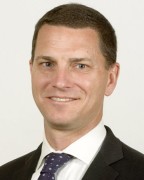Fast-moving opportunities for sensors such as the internet of things (IoT) require a swift approach to translating devices from the lab to the market.
“To move more rapidly and take advantage of the largest growth opportunities in sensors, developers are rethinking the use of new material technologies, and finding places where software can accelerate or even replace steps in the process,” explains Mark Bünger, Vice President of Research at Lux Research, in the latest issue of the journal Translational Materials Research (TMR).
Building blocks
Thanks to success of mobile phones and other portable electronics, device-makers have a wealth of sensors such as cameras, microphones and accelerometers to choose from. Pairing these tried and tested components with software can, in many cases, emulate the functionality of much more complex set-ups and provide a swift solution for developers.
Readily available building blocks also include gyros and fingerprint scanners as well as Geiger counters, LIDAR, RFID and FTiR development kits, many of which are supported by online tutorials to aid rapid prototyping.
There are other benefits too, as Bunger points out in the article –
“Off the shelf sensors carry lower technology risk and cost, and the system can be easily upgraded with new software, as we improve our understanding of the phenomena being sensed.”
Markets
Today, software defined sensing is addressing a range of applications, for example –
- accelerometers can replace heart rate monitors and other devices for fitness/health tracking,
- depth cameras recognize gestures and can replace touchscreen user-interfaces on consumer electronics,
- microphones recognize speech and sounds (for example – something burning on stove or the front door opening) for smart home applications.
Full details
To find out more about how device makers and materials designers are fast-tracking the journey from prototype to product, and for an overview of the software defined sensing landscape from a company perspective, read – Accelerating sensor development to the speed of light (Mark Bünger 2015 Transl. Mater. Res. 2 040301).
Related articles
 Before entering the valley of death
Before entering the valley of death
Evaluating second-generation attributes is a necessary step in the discovery process explains George Grüner, Editor-In-Chief of the journal Translational Materials Research (TMR)
 An interview with TMR board member Om Nalamasu
An interview with TMR board member Om Nalamasu
Om Nalamasu, CTO of Applied Materials, offers an industrial perspective on managing innovation, and sets the scene for a 21st century of materials

